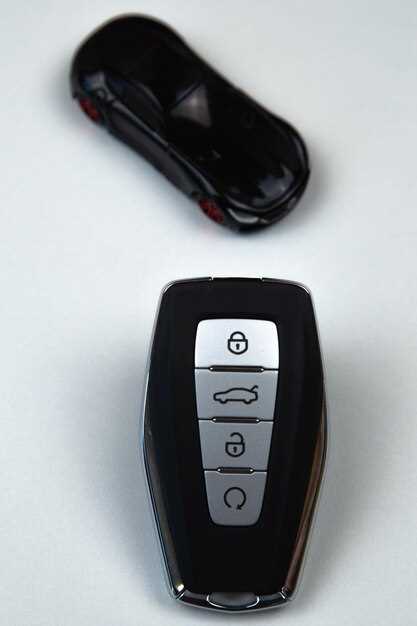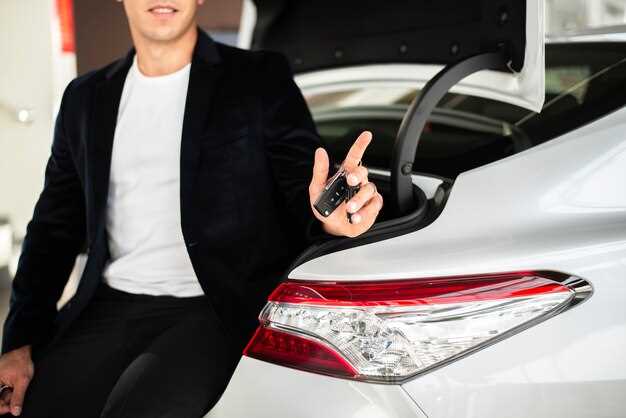Audi Keyless Entry – How Secure Is It?

In today’s fast-paced world, convenience and security are paramount, especially when it comes to our vehicles. Audi’s keyless entry system is designed to provide effortless access while ensuring that your vehicle’s security remains uncompromised. This innovative technology has revolutionized the way we interact with our cars, combining ease of use with advanced protective measures.
The keyless entry system employs several sophisticated features to safeguard against unauthorized access. These features include rolling codes, signal encryption, and advanced authentication protocols. By utilizing these technologies, Audi minimizes the risk of common threats associated with traditional key systems, making unauthorized entry significantly more challenging.
Moreover, understanding how these security features function can enhance your awareness of potential vulnerabilities. While keyless entry offers convenience, it’s essential to remain informed about the possible risks and the measures you can adopt to fortify your vehicle’s protection. This article will delve into the essential components of Audi’s keyless entry security, ensuring you are well-equipped to maximize both convenience and safety.
How Audi’s Keyless Entry System Works
Audi’s keyless entry system allows drivers to unlock and start their car without physically using a traditional key. This innovative technology relies on radio frequency identification (RFID) to communicate between the key fob and the vehicle.
The process begins when the key fob is in close proximity to the car. As the driver approaches, sensors embedded in the vehicle detect the fob’s presence, triggering the locking mechanism to unlock the doors automatically. This feature enhances convenience, enabling seamless entry when the driver’s hands are full.
Once inside the car, starting the engine is equally straightforward. The driver simply needs to press the start button, provided the key fob is within the vehicle. The system recognizes the fob through a short-range encrypted signal, ensuring that only the authorized key can start the engine.
To ensure security, Audi’s keyless entry system employs advanced encryption and rolling codes, which makes it significantly harder for unauthorized individuals to intercept the signal. Additionally, if the key fob is out of range for a specific time, the vehicle automatically locks itself, adding an extra layer of protection.
Overall, Audi’s keyless entry technology exemplifies a blend of convenience and heightened security, providing a modern solution for accessing and operating the vehicle effortlessly.
Common Vulnerabilities in Keyless Entry Technology
Keyless entry systems in modern cars offer convenience but also present several security vulnerabilities that can be exploited by criminals. Understanding these weaknesses is crucial for both manufacturers and consumers to enhance the security of their vehicles.
- Relay Attacks: This method involves intercepting the signal from a key fob, allowing thieves to unlock and start the car. By using two devices, they can amplify and relay the signal from the key to the car.
- Signal Jamming: Attackers can use devices that block or disrupt the frequency between the key fob and the car, preventing the vehicle from locking or unlocking. This can lead to unauthorized access if the owner believes their car is secure.
- Code Grabbing: Some systems use rolling codes for communication between the key fob and the vehicle. However, vulnerabilities exist that allow attackers to capture these codes and use them to unlock the car later, even when the original owner is not around.
- Poor Encryption: Weak or outdated encryption methods in keyless entry systems can make it easier for hackers to decode the signals transmitted between the key fob and the car, compromising security.
- Physical Access: If an attacker gains physical access to the car’s internal wiring or electronic components, they can bypass the keyless entry system altogether, gaining control over the vehicle.
Awareness of these vulnerabilities is essential for car owners and manufacturers alike to implement better security measures, ensuring the safety of vehicles equipped with keyless entry technology.
Step-by-Step Guide to Securing Your Keyless Entry System

Securing your car’s keyless entry system is essential to prevent unauthorized access and protect your vehicle. Follow these steps to enhance the security of your keyless entry system.
1. Understand Your System: Familiarize yourself with the specific features of your keyless entry system. Review the user manual to understand how it operates and what security measures are built-in.
2. Update Software: Regularly check for software updates provided by the vehicle manufacturer. Keeping your system up-to-date helps to patch vulnerabilities that could be exploited by thieves.
3. Use Faraday Pouches: Store your key fob in a Faraday pouch when not in use. These pouches block signal transmission, preventing hackers from amplifying the signal to unlock your car.
4. Set Up Alerts: Enable any mobile notifications or alerts that your vehicle might offer. This feature can inform you of any unauthorized attempts to access your car.
5. Enable Additional Security Features: Use any additional security features available, such as setting a PIN code for your keyless entry system or activating an optional immobilizer for added protection.
6. Avoid Key Fob Duplication: Be cautious when creating spare key fobs. Use reputable services and ensure they are authorized to reproduce your key fob, minimizing the risk of duplication by unauthorized individuals.
7. Monitor Your Surroundings: Pay attention to your surroundings when you use your keyless entry system. Be aware of individuals who may be loitering nearby to intercept the signal.
8. Consider Tracking Systems: Install a GPS tracking system in your car. This allows you to locate your vehicle if it gets stolen, increasing the chances of recovery.
9. Consult with Professionals: If you have concerns about the security of your keyless entry system, consult with automotive security professionals for tailored advice and potential enhancements to your setup.
By following these steps, you can significantly enhance the security of your car’s keyless entry system and reduce the risk of theft.
Real-World Examples of Keyless Entry Theft
Keyless entry systems, while convenient, can pose significant security risks. Several notable incidents highlight the vulnerabilities associated with these features:
-
Relay Attack in London
In a series of incidents across London, thieves employed relay devices to intercept signals from key fobs. Owners would unknowingly leave their keys indoors while criminals stood outside, extending the signal. This led to the theft of high-end vehicles in mere minutes.
-
Celebrity Car Theft
Several high-profile celebrities have reported their luxury vehicles being stolen using keyless entry hacks. In one case, a celebrity’s car was taken from their driveway, using a relay attack that bypassed the vehicle’s security features with ease.
-
Apartment Break-In
In an incident involving an apartment complex equipped with keyless entry, thieves exploited the system to gain access. They did not need physical keys, as they were able to guess the code after observing a resident inputting it multiple times.
-
High-Tech Tools in Canada
Canadian police reported a wave of car thefts, where criminals utilized high-tech equipment to capture the frequency of the key fob’s signal. This approach effectively allowed them to unlock and start the vehicles without a physical key, making traditional locks seem obsolete.
These examples emphasize the importance of enhancing security measures for keyless entry systems. Vehicle owners are encouraged to consider additional safeguards, such as steering wheel locks and signal-blocking pouches for key fobs, to mitigate the risk of theft.
Advanced Features that Enhance Audi Keyless Entry Security

Audi has integrated various advanced features into its keyless entry system to bolster security and protect against unauthorized access. One of the most significant aspects is the use of frequency hopping technology. This method involves rapidly changing the transmission frequency of the key fob, making it more difficult for potential thieves to intercept the signal and gain unauthorized entry.
Another critical feature is the passive entry system, which allows the car to unlock as the authorized key fob approaches, while simultaneously utilizing rolling codes. Each time the vehicle is accessed, the code transmitted between the fob and the car changes, further complicating attempts at replication or hijacking.
Audi also employs an anti-relay theft system. This technology prevents thieves from using devices that extend the signal of a key fob from inside a house to unlock the vehicle. By measuring the signal strength, the system ensures that only signals transmitted in close proximity to the car are accepted for unlocking.
Moreover, the keyless entry feature is often paired with advanced alarm systems that activate if unauthorized attempts are detected. This would include alerts for door tampering or forced entry, providing additional layers of protection for vehicle owners.
Finally, regular software updates help maintain the vehicle’s security system. Audi frequently improves its keyless technology through upgrades that enhance overall resilience against emerging hacking techniques, ensuring that users benefit from the latest advancements in security.
Comparative Analysis of Audi’s Keyless Entry with Competitors
Audi’s keyless entry system is known for its advanced security features, which set it apart from competitors in the automotive market. This analysis evaluates Audi’s keyless entry technology in comparison to similar systems from other manufacturers, focusing on security and overall user experience.
| Feature | Audi | Competitor A | Competitor B |
|---|---|---|---|
| Encryption Protocols | High-level, proprietary encryption | Standard encryption methods | Basic encryption |
| Signal Jamming Prevention | Integrated anti-jamming technology | No jamming prevention mechanisms | Basic signal amplification |
| Remote Start Functionality | Available with secure authentication | Absent | Available but unencrypted |
| Mobile App Integration | Comprehensive with added security layers | Limited functionality | No mobile app integration |
| Physical Key Backup | Available in emergency situations | Unavailable | Only basic key access |
Audi’s approach emphasizes proactive security measures, such as advanced encryption and signal jamming prevention, effectively reducing the risk of unauthorized access. Unlike some competitors, Audi provides a mobile app that enhances remote management of the vehicle and offers additional layers of security. The option for a physical key backup ensures that users can still access their car in emergency scenarios, showcasing a thoughtful design that prioritizes safety without compromising convenience.
In conclusion, when comparing Audi’s keyless entry system to those of competitors, it is clear that Audi places a premium on security features, making their keyless entry technology a robust choice for potential car buyers seeking peace of mind.




